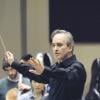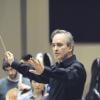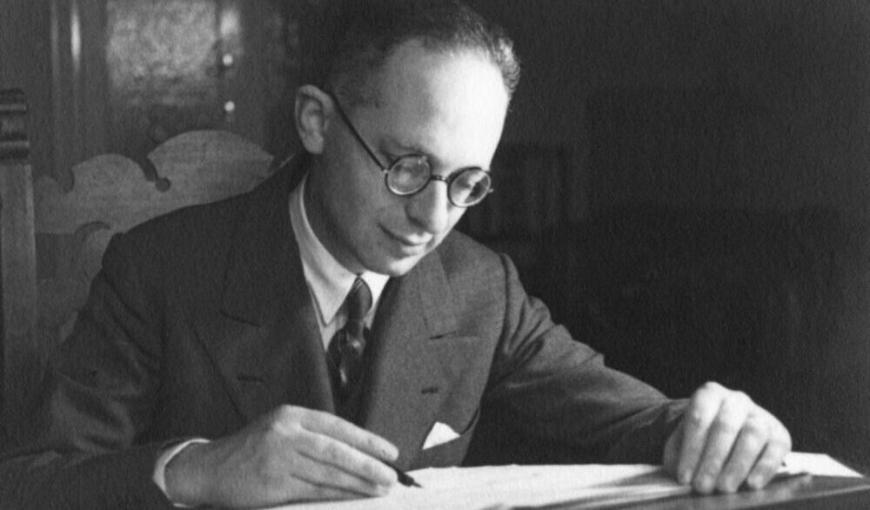
The composers Walter Arlen and Mario Castelnuovo-Tedesco were close friends. They shared a great deal in common, though Arlen (born Walter Aptowitzer in 1920) was from Vienna and Castelnuovo-Tedesco (born in 1895) was from Florence. Both men were musical prodigies from affluent families. Both were Jewish, and both were forced to flee their homelands, eventually settling in Los Angeles, where their lives intersected.
Arlen’s path led to academia and journalism (he founded the music department at Loyola Marymount College and was a music critic for the Los Angeles Times), while Castelnuovo-Tedesco was absorbed into the movie business, where he worked on (though was rarely credited for) over 200 films. Though Castelnuovo-Tedesco’s works for guitar, many originally written for Andrés Segovia, are now cornerstones of the repertory, much of the rest of his music has been underplayed and unacknowledged. Arlen has been all but forgotten.
It’s historic oversights like these that conductor James Conlon has been striving to rectify since 2007, when Los Angeles Opera unveiled Recovered Voices, a performance initiative dedicated to bringing to light the lost heritage of musicians persecuted by the fascists. Recently, the category was expanded to include a staging of William Grant Still’s one-act opera Highway 1, USA, representing the neglected voices of Black American composers. In 2015, Conlon devoted an entire Recovered Voices program, “The Poet in Exile,” to Arlen’s music.
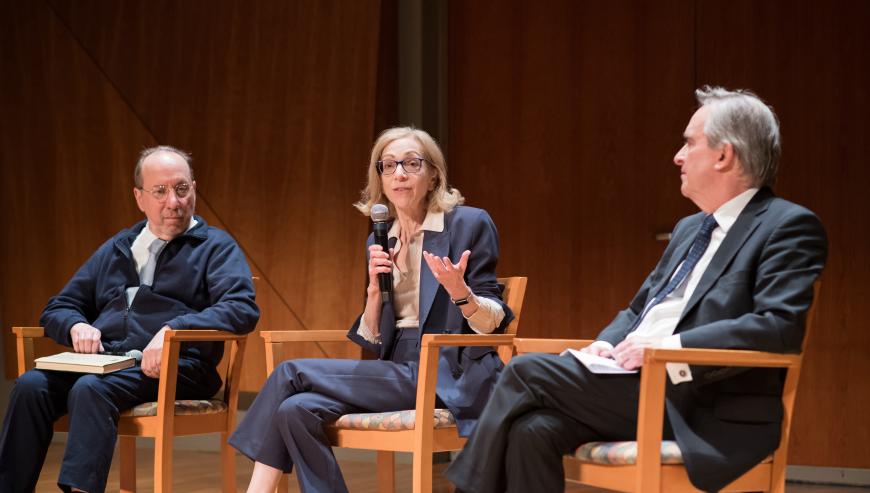
On Friday, Recovered Voices celebrated the music of Arlen and Castelnuovo-Tedesco with a recital in Thayer Hall at the Colburn School, which for the past decade has been a home for the initiative. The performance was preceded by an illuminating panel discussion that included Conlon, music historian Harvey Sachs, and Diana Castelnuovo-Tedesco (the composer’s granddaughter), moderated by violinist Adam Millstein.
The highlight of the concert was a performance of Castelnuovo-Tedesco’s String Quartet No. 2 in F Minor, Op. 139, which had not received a live performance in Los Angeles since 1948, the year of its composition. According to Millstein, the piece was inspired by the composer’s return to Florence after World War II. The city was a shattered shell, but in the rolling hills of Tuscany, Castelnuovo-Tedesco felt the connection to his Italian musical heritage rejuvenated.
As performed by Millstein, violinist Jason Moon, violist Nicolas Garrigues, and cellist Shengyu Meng — all Colburn students — the quartet’s opening movement reflected a deep sense of ambivalence, even dread, that was first voiced sonorously by the solo cello. The movement then develops as a series of conflicting voices, not unlike a movie scenario. Lines of buoyant lyricism are jarred by discordant interjections, like an image reflected in a shattered mirror.
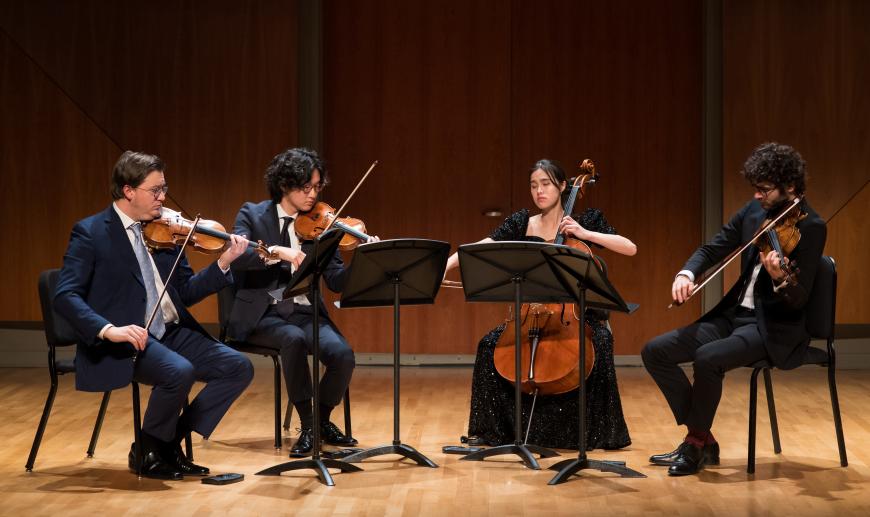
In contrast, the second movement, Andante mesto, unfolds as a terrestrial rhapsody inspired by the cypress trees that dot the Tuscan landscape. Here, Castelnuovo-Tedesco creates some of the work’s most imaginative instrumental coloration as the viola sings a shadowy aria in its lowest register, incorporating cello-like tones. The cello then takes up and elaborates the melody, initially in its upper, viola-like register.
The final movement, Molto vivo e ben ritmato, is an earthy, peasant-style dance, rooted, romping, and filled with energy, including a theme that clearly echoes Antonín Dvořák’s “New World” Symphony, an appropriate reference to another foreigner who found himself a stranger in a strange land.
The superbly crafted performance made a strong case for the quartet finding its way into the repertory, especially now that the score has been published (in 2019 by Edizioni Curci).
The concert opened with “Ein Quartett-Satz (on the name of Walter Arlen).” Composed in 1960, the work is one in Castelnuovo-Tedesco’s series of short pieces to friends, which he called Greeting Cards. It combines adoration for Franz Schubert with a pizzicato refrain mirroring the letters in Arlen’s name.
The second half of the concert was devoted to Arlen, who lived to be 103 and died in Los Angeles in 2023. He lived long enough to see a newfound appreciation for his music, much of which was recorded in a series on the Gramola label superintended by Michael Haas, beginning when the composer was 92. Die letzte Blaue (The last blue light — or, figuratively, the last streetcar), a fantasy for piano composed between 1999 and 2000, was performed here, with bravado, by Dominic Cheli. An embodiment of the composer’s personal odyssey, remembering the Vienna of the late 1930s, the work’s themes shine and disappear. Do I hear a waltz?
Cheli then remained at the keyboard for a fascinatingly diverse performance of Arlen’s four whimsical Monotypes composed between 1986 and 1993 and dedicated to old friends: “Preludio Capriccioso: Omaggio a Mario Castelnuovo-Tedesco,” “I Want a House,” “Iturbiana,” and “Saudades do Milhaud.” The music is as varied as the titles, from passages that hang in the air like ice crystals to sections of impassioned energy in honor of Arlen’s favorite pianist, José Iturbi, all ending with a swinging melange of melodic threads drawn from the works of another California transplant, Darius Milhaud.
The concert closed with Arlen’s 1994 “Sonnet” for violin and piano, a wistful note to end on.



